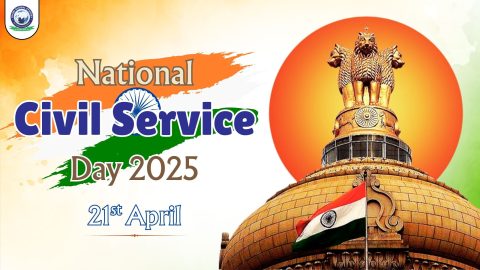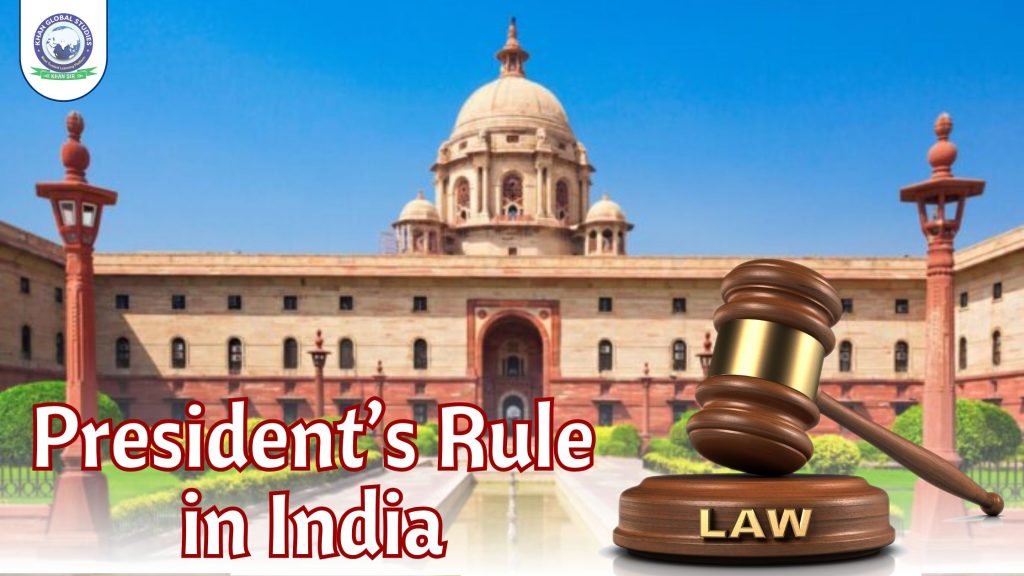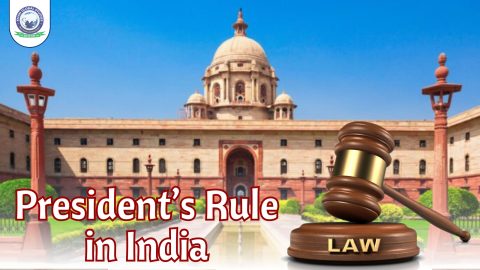President’s rule refers to the suspension of a state government and direct administration of a state by the central government. It is imposed under Article 356 of the Indian Constitution when a state government fails to function according to constitutional provisions. During this period, the President of India, through the governor, controls the governance of the state.
When and why is the President rule imposed?
The central government can impose the President’s rule in a state in the following situations:
- Failure of constitutional machinery – When a state government cannot function according to constitutional provisions.
- Breakdown of law and order – If law and order collapses in a state and the government fails to control the situation.
- No clear majority – When no political party or coalition secures a majority in the state legislature after the elections.
- Governor’s report – If the governor submits a report stating that the government is not functioning properly.
- Failure to follow the Constitution – If the state government disregards constitutional norms or violates laws.
- Political instability – If the ruling party loses the majority and no other party can form the government.
- Riots or insurgency – If there is widespread violence or internal unrest, making governance is impossible.
Effects of President Rule on State Governance
When the President’s rule is imposed in a state, the following changes take place:
- Governor assumes executive powers – The Governor, acting as the President’s representative, takes over administrative functions.
- The state legislature is either dissolved or suspended – If dissolved, fresh elections are announced; if suspended, the legislature remains inactive.
- The Chief Minister and the Cabinet are dismissed – The ruling government loses its authority.
- Parliament rules the state – The Central Government administers the state through the Governor.
Constitutional Provisions for President’s Rule
Article 356: Key Features
- Maximum period – Initially imposed for six months, which can be extended up to three years from time to time with approval from Parliament.
- Approval by Parliament – The proclamation must be approved by both Lok Sabha and Rajya Sabha within two months.
- Review after six months – Approval from both Houses of Parliament is required every six months.
- Judicial Review – If the proclamation is misused then the Supreme Court or the High Courts can review it and quash it.
Procedure for Imposition of President’s Rule
- Governor’s Report
- The Governor submits a report to the President explaining the failure of the constitutional machinery.
- The report highlights political instability, loss of majority, breakdown of law and order or inability to function following the Constitution.
- President’s Proclamation
- Based on the Governor’s report, the President issues a proclamation imposing the President’s rule.
- The proclamation suspends or dissolves the state legislature and transfers executive powers to the central government.
- Parliamentary Approval
- The proclamation must be approved by both the Lok Sabha and Rajya Sabha within two months.
- Once approved, it remains effective for six months and can be extended up to three years with the approval of Parliament every six months.
Judicial Safeguards Against Misuse of President’s Rule
To prevent misuse, the Supreme Court has laid down guidelines for imposing President’s rule:
- S.R. Bommai Case (1994) – The Supreme Court ruled that the President’s rule is subject to judicial review.
- Need for Floor Test – Before dismissing the government, a floor test must be conducted in the assembly.
- No Arbitrary Dismissal – The central government cannot impose the President’s rule for political gain.
- Limited Period of Rule – The President’s rule cannot exceed three years.
Examples of President’s Rule in India
President’s rule has been imposed over 100 times since 1950. Some notable cases include:
- 1977 (Indira Gandhi’s government) – Several opposition-led state governments were dismissed.
- 1989 (V.P. Singh’s government) – Imposed in several states where Congress governments were in power.
- 1992 (BJP-led UP government) – President’s rule imposed after the Babri Masjid demolition.
- 2016 (Uttarakhand and Arunachal Pradesh) – Imposed due to political crisis but later revoked by the Supreme Court.
How is the President’s Rule Lifted?
President’s rule is lifted when:
- A new government is formed after fresh elections.
- The President is satisfied that normalcy has been restored.
- Parliament decides to end the rule before the expiry of the six months.
- If the proclamation has been illegally implemented the judiciary intervenes and revokes it.
Criticism and Controversies of President’s Rule
Despite its constitutional importance, the President’s rule has faced criticism for the following reasons:
- Political Abuse – It has been used to dismiss opposition-led state governments.
- Threat to Federalism – Central intervention undermines state autonomy.
- Delay in Fresh Elections – Prolonged President’s rule hampers democratic governance.
- Judicial Encroachment – Courts have often questioned the misuse of Article 356.
Conclusion
President’s rule in India plays a vital role in maintaining constitutional order during crises. However, its application must be justifiable, transparent and within judicial limits to prevent its misuse. Though it ensures stability in exceptional cases, it should not be used as a political tool to undermine democracy.




